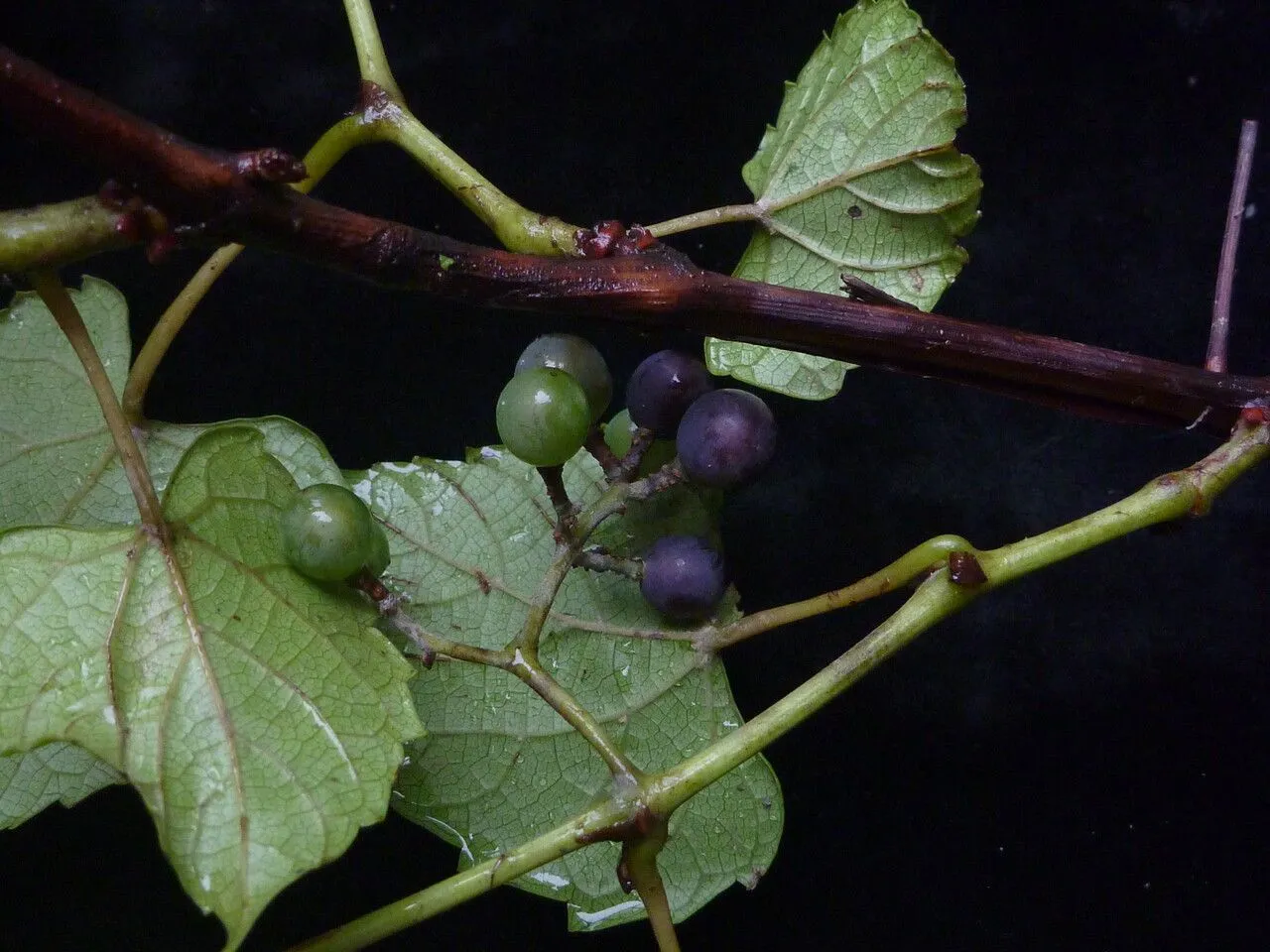
Author: Thunb.
Bibliography: Trans. Linn. Soc. 2: 332 (1794)
Year: 1794
Status: accepted
Rank: species
Genus: Vitis
Vegetable: False
Observations: China to Japan and Trop. Asia
Creeping grape, scientifically known as Vitis flexuosa, is a remarkable and versatile plant belonging to the Vitaceae family. This plant species was first documented by Thunb., with its initial description recorded in the Transactions of the Linnean Society in 1794. The creeping grape is native to a broad geographic range that extends from China to Japan and throughout tropical Asia.
Vitis flexuosa is characterized by its vigorous climbing growth habit, which sees it prolifically ascending and sprawling over nearby structures and vegetation, earning its common name “creeping grape.” The plant’s tendrils, which are specialized structures for clinging and climbing, allow it to thrive in various habitats, from forested areas to more open landscapes.
The leaves of the creeping grape are typically heart-shaped with a somewhat toothed margin, providing a lush and verdant canopy wherever the plant grows. In addition to its appealing foliage, Vitis flexuosa produces small, greenish flowers which give way to clusters of grapes. These grapes may vary in color through different shades of green, red, or even purplish hues, depending on the specific variety and environmental conditions in which the plant is growing.
Ecologically, the creeping grape plays a significant role in its native habitats. It provides food and habitat for various wildlife species, and its rapid growth can aid in stabilizing soil in areas prone to erosion. Furthermore, the dense foliage can create microhabitats for numerous insects and smaller organisms, making it an integral component of the ecosystem.
In the horticultural world, Vitis flexuosa is prized for its ornamental value. Gardeners and landscape designers often utilize it to cover trellises, fences, and arbors, where its rapid growth and beautiful foliage make it an attractive choice for adding a touch of natural elegance to outdoor spaces. Additionally, the plant’s resilience and adaptability to different environments make it a suitable candidate for various climatic conditions.
While predominantly appreciated for its decorative appeal, the creeping grape has also been noted for its potential in traditional herbal practices within its native range. Its leaves, stems, and grapes have been used in various folk remedies, showcasing a cultural significance beyond its aesthetic and ecological contributions.
In summary, Vitis flexuosa, or the creeping grape, is a plant of notable versatility and beauty. Its widespread distribution from China to Japan and tropical Asia, combined with its robust growth and ecological benefits, underscores its importance both in nature and in cultivation. Whether as a wild climber in forests or as a cherished ornamental in gardens, the creeping grape continues to captivate with its resilience and elegance.
Eng: creeping grape
En: Creeping grape
Ar: كرمة متعرجة
Zh: 光葉葡萄, 葛藟葡萄
Ko: 새머루
Zh-tw: 光葉葡萄
Zh-hant: 葛藟葡萄
Taken Jul 20, 2012 by Royal Botanic Garden Edinburgh – Anonymous (cc-by-nc)
Taken Jul 20, 2012 by Royal Botanic Garden Edinburgh – Anonymous (cc-by-nc)
Taken Jul 20, 2012 by Royal Botanic Garden Edinburgh – Anonymous (cc-by-nc)
Taken Jul 20, 2012 by Royal Botanic Garden Edinburgh – Anonymous (cc-by-nc)
Taken Jul 20, 2012 by Royal Botanic Garden Edinburgh – Anonymous (cc-by-nc)
© copyright of the Board of Trustees of the Royal Botanic Gardens, Kew.
© copyright of the Board of Trustees of the Royal Botanic Gardens, Kew.
© copyright of the Board of Trustees of the Royal Botanic Gardens, Kew.
Taken Jul 20, 2012 by Royal Botanic Garden Edinburgh – Anonymous (cc-by-nc)
Family: Myrtaceae Author: (F.Muell.) K.D.Hill & L.A.S.Johnson Bibliography: Telopea 6: 402 (1995) Year: 1995 Status:…
Family: Rubiaceae Author: Pierre ex A.Froehner Bibliography: Notizbl. Bot. Gart. Berlin-Dahlem 1: 237 (1897) Year:…
Family: Sapindaceae Author: Koidz. Bibliography: J. Coll. Sci. Imp. Univ. Tokyo 32(1): 38 (1911) Year:…
Family: Asteraceae Author: A.Gray Bibliography: Pacif. Railr. Rep.: 107 (1857) Year: 1857 Status: accepted Rank:…
Family: Fabaceae Author: Medik. Bibliography: Vorles. Churpfälz. Phys.-Ökon. Ges. 2: 398 (1787) Year: 1787 Status:…
Family: Aspleniaceae Author: (Cav.) Alston Bibliography: Bull. Misc. Inform. Kew 1932: 309 (1932) Year: 1932…